Arpit Shah
Data Efficient Evaluation of Large Language Models and Text-to-Image Models via Adaptive Sampling
Jun 21, 2024Abstract:Evaluating LLMs and text-to-image models is a computationally intensive task often overlooked. Efficient evaluation is crucial for understanding the diverse capabilities of these models and enabling comparisons across a growing number of new models and benchmarks. To address this, we introduce SubLIME, a data-efficient evaluation framework that employs adaptive sampling techniques, such as clustering and quality-based methods, to create representative subsets of benchmarks. Our approach ensures statistically aligned model rankings compared to full datasets, evidenced by high Pearson correlation coefficients. Empirical analysis across six NLP benchmarks reveals that: (1) quality-based sampling consistently achieves strong correlations (0.85 to 0.95) with full datasets at a 10\% sampling rate such as Quality SE and Quality CPD (2) clustering methods excel in specific benchmarks such as MMLU (3) no single method universally outperforms others across all metrics. Extending this framework, we leverage the HEIM leaderboard to cover 25 text-to-image models on 17 different benchmarks. SubLIME dynamically selects the optimal technique for each benchmark, significantly reducing evaluation costs while preserving ranking integrity and score distribution. Notably, a minimal sampling rate of 1% proves effective for benchmarks like MMLU. Additionally, we demonstrate that employing difficulty-based sampling to target more challenging benchmark segments enhances model differentiation with broader score distributions. We also combine semantic search, tool use, and GPT-4 review to identify redundancy across benchmarks within specific LLM categories, such as coding benchmarks. This allows us to further reduce the number of samples needed to maintain targeted rank preservation. Overall, SubLIME offers a versatile and cost-effective solution for the robust evaluation of LLMs and text-to-image models.
Introducing Astrocytes on a Neuromorphic Processor: Synchronization, Local Plasticity and Edge of Chaos
Jul 02, 2019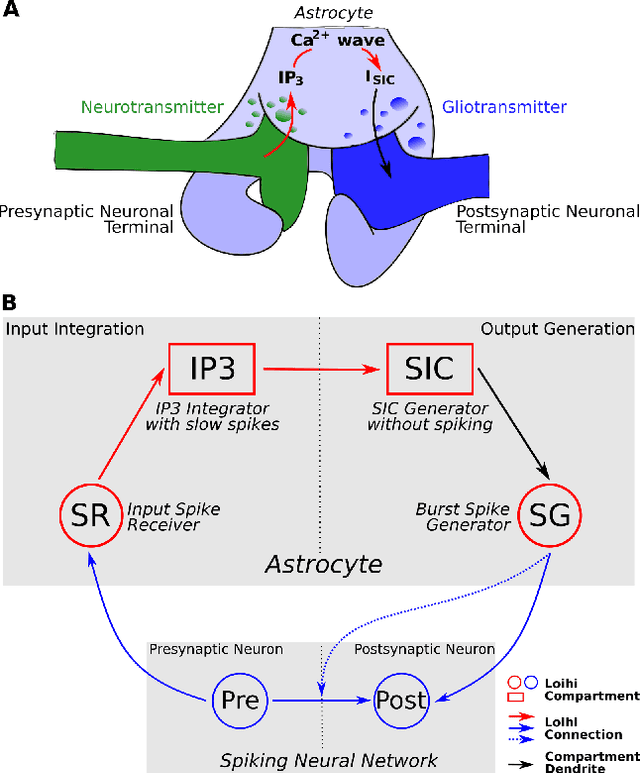
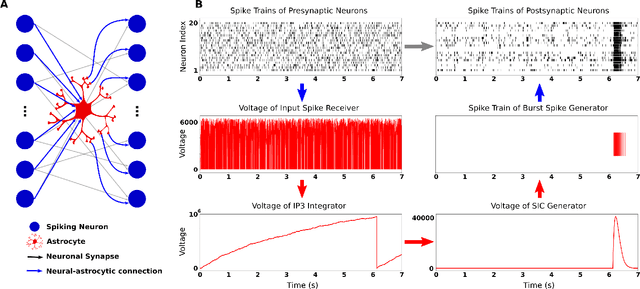


Abstract:While there is still a lot to learn about astrocytes and their neuromodulatory role associated with their spatial and temporal integration of synaptic activity, the introduction of an additional to neurons processing unit into neuromorphic hardware is timely, facilitating their computational exploration in basic science questions and their exploitation in real-world applications. Here, we present an astrocytic module that enables the development of a spiking Neuronal-Astrocytic Network (SNAN) into Intel's Loihi neuromorphic chip. The basis of our module is an end-to-end biophysically plausible compartmental model of an astrocyte that simulates how intracellular activity may encode synaptic activity in space and time. To demonstrate the functional role of astrocytes in SNANs, we describe how an astrocyte may sense and induce activity-dependent neuronal synchronization, can endow single-shot learning capabilities in spike-time-dependent plasticity (STDP), and sense the transition between ordered and chaotic activity in the neuronal component of an SNAN. Our astrocytic module may serve as a natural extension for neuromorphic hardware by mimicking the distinct computational roles of its biological counterpart.
Spiking Neural Network on Neuromorphic Hardware for Energy-Efficient Unidimensional SLAM
Mar 06, 2019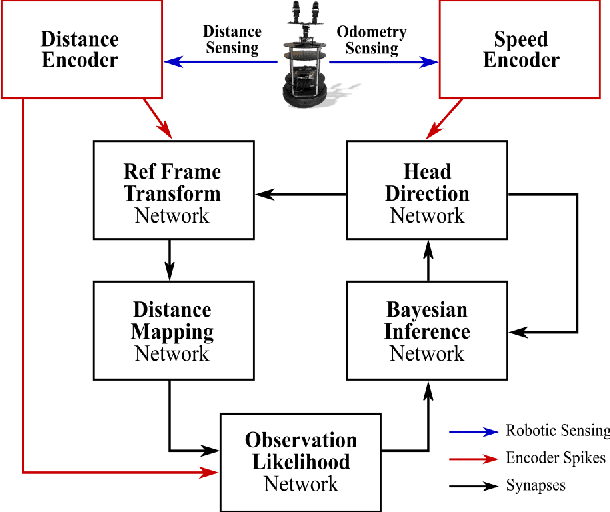
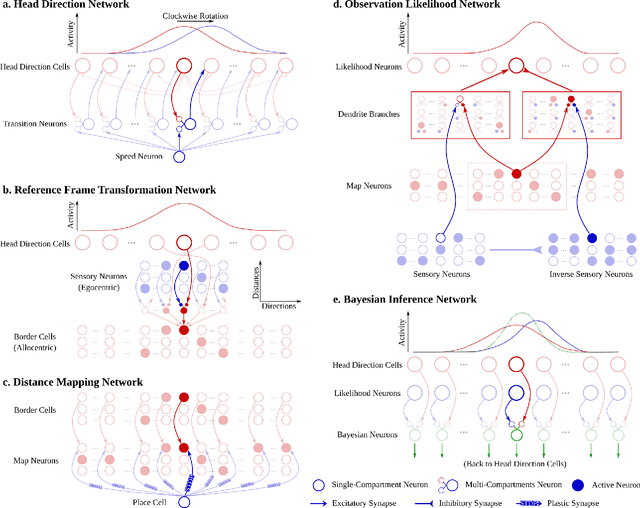
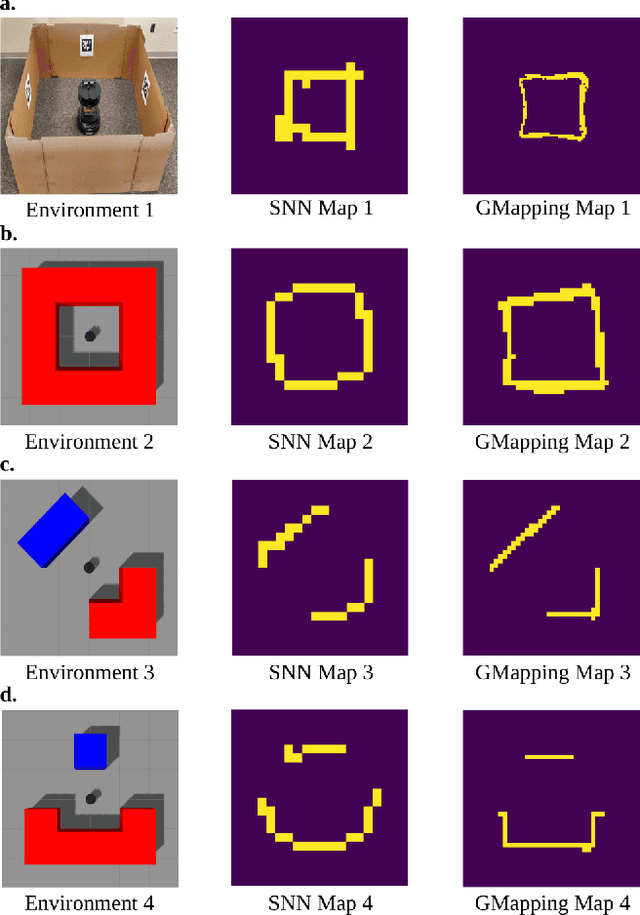
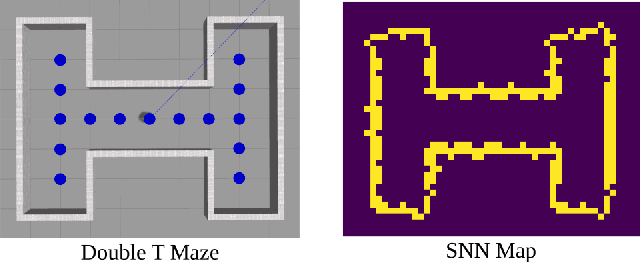
Abstract:Energy-efficient simultaneous localization and mapping (SLAM) is crucial for mobile robots exploring unknown environments. The mammalian brain solves SLAM via a network of specialized neurons, exhibiting asynchronous computations and event-based communications, with very low energy consumption. We propose a brain-inspired spiking neural network (SNN) architecture that solves the unidimensional SLAM by introducing spike-based reference frame transformation, visual likelihood computation, and Bayesian inference. Our proposed SNN is seamlessly integrated into Intel's Loihi neuromorphic processor, a non-Von Neumann hardware that mimics the brain's computing paradigms. We performed comparative analyses for accuracy and energy-efficiency between our method and the GMapping algorithm, which is widely used in small environments. Our Loihi-based SNN architecture consumes 100 times less energy than GMapping run on a CPU while having comparable accuracy in head direction localization and map-generation. These results pave the way for extending our approach towards an energy-efficient SLAM that is applicable to Loihi-controlled mobile robots.
 Add to Chrome
Add to Chrome Add to Firefox
Add to Firefox Add to Edge
Add to Edge